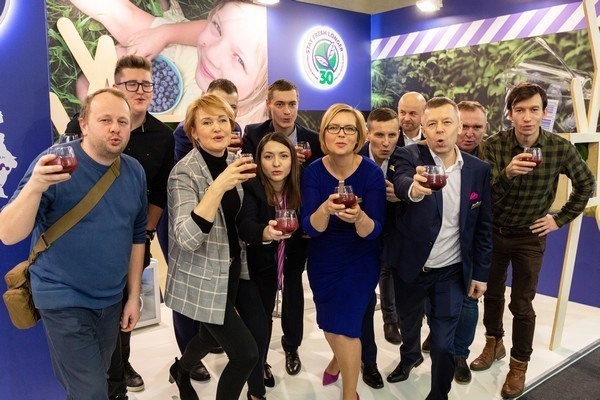The Polish berry grower is more focused on high quality compared to a couple of years ago, says Dominika Kozarzewska of the Polish Berry Cooperative. “The Polish production of raspberries, blackberries, and strawberries has been shifting towards high-quality fresh market fruits, mostly grown under tunnels. This change is driven not only by growing demand for high-quality berries but also by climate change, which is rendering open-field production more and more challenging. For blueberries, the acreage is no longer growing at a very fast pace, but varietal changeover is gaining momentum at the existing plantations. Because of the growing demand for off-season fruit, many producers and exporters have also started to import berries in order to provide a year-round offering. This availability is further boosting demand as it makes it easier for consumers to develop a habit of eating soft fruit most days of the year.”
The past season suffered some heavy losses due to the frost, but the overall production was only marginally lower than the year before, Kozarzewska explains. “The main challenge of the 2024 season was the very early and rapid start of the growing season, which meant that in some farms the May frost affected green fruit rather than flowers. This resulted in heavy losses, as green fruit is much more susceptible to frost damage. However, the frost happened locally and impacted growers to a varying extent. All in all, thanks to the fact that Polish farms are dispersed in almost all regions of the country, the total crop of blueberries was only slightly lower than in 2023.”

“According to data provided by Agronometrics, blueberry exports actually surpassed those of 2023 by 17%, reaching almost 26,000 tons. It’s also worth noting that imports of blueberries from Ukraine, and thus re-exports of Ukrainian fruit from Poland, are significantly lower than we are sometimes led to believe. The Polish State Plant Health and Seed Inspection Service informed that in 2023, 1,7 thousand tons of blueberries crossed the Ukrainian-Polish border, while in 2024 that figure was at 3,1 thousand tons.”
Looking at the upcoming season, Kozarzewska expects little change in terms of production compared to the last season: “At this point, we’re expecting a similar blueberry harvest to 2024, as possible crop loss due to frost is compensated by recent plantings entering into full production. Harvest of the other berries for the fresh market should be higher than last year, due to the growing acreage and the fact that most of this fruit is now grown under covers. However, we will update our projections for the season in June, as frost is still possible.”
Kozarzewska states that the push towards higher quality berries will not end here. “In my opinion, the Polish berry industry will continue its transformation towards higher quality, efficiency, and sustainability. I believe the key to future success is building resistance of each farm and the entire industry in the face of challenging external factors such as climate change, unstable trade environment, or new EU policies. To this end, we’re improving production technologies, implementing smart farming, growing new varieties, and further promoting fruit consumption. Also, the Polish berry sector is now developing its strategy for the coming years, which, if implemented correctly, will hopefully secure the future of the industry,” she concludes.
For more information:
Dominika Kozarzewska
Polish Berry Cooperative
Tel: +48 602 354 586
Email: [email protected]
Source: The Plantations International Agroforestry Group of Companies
